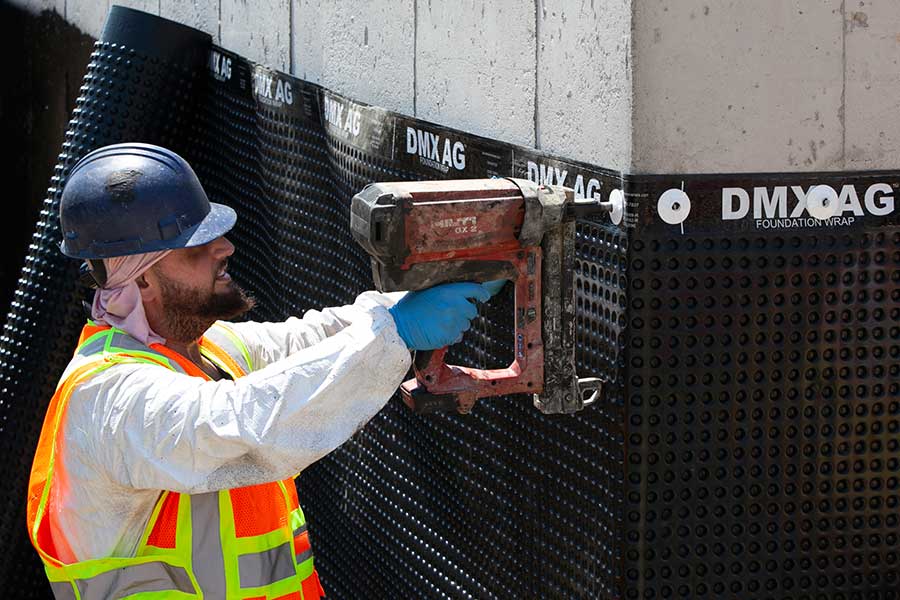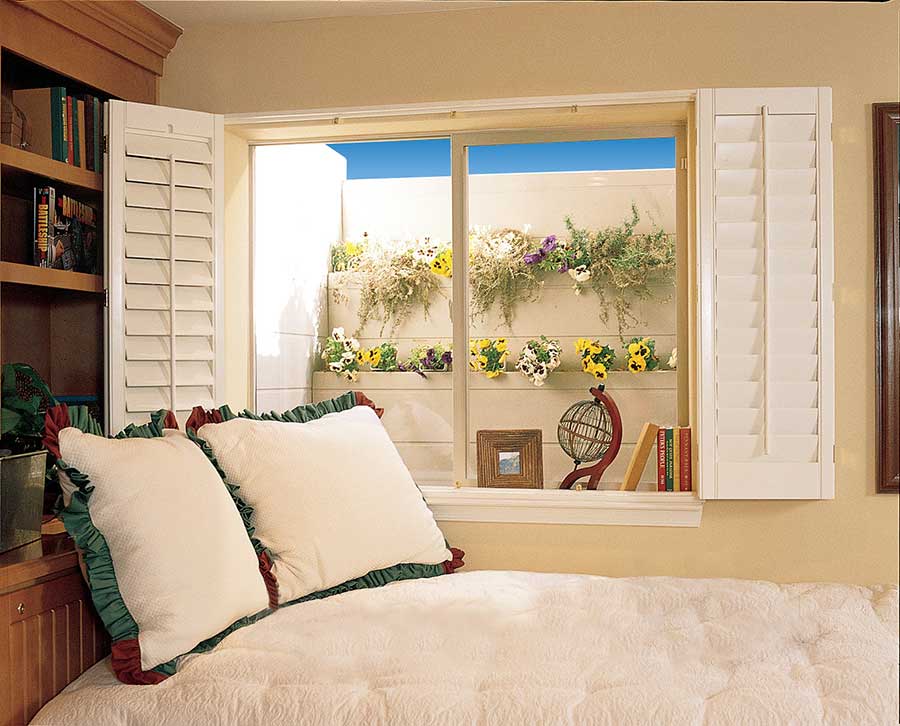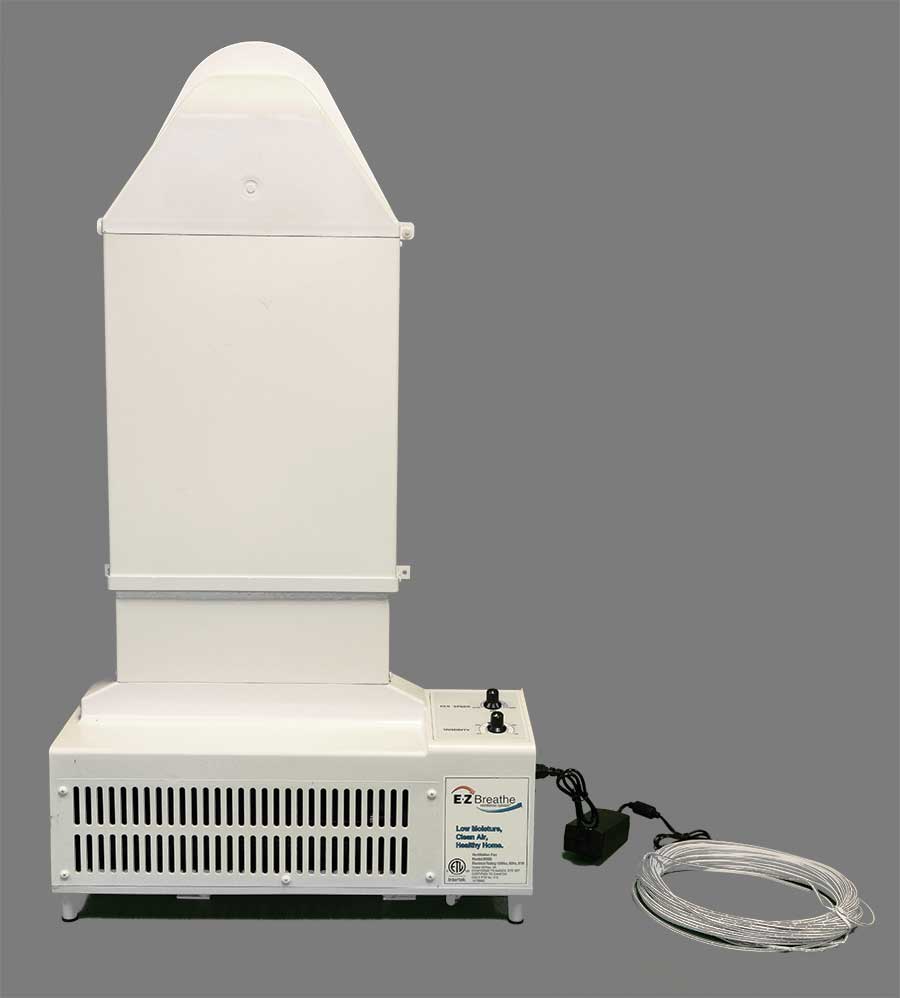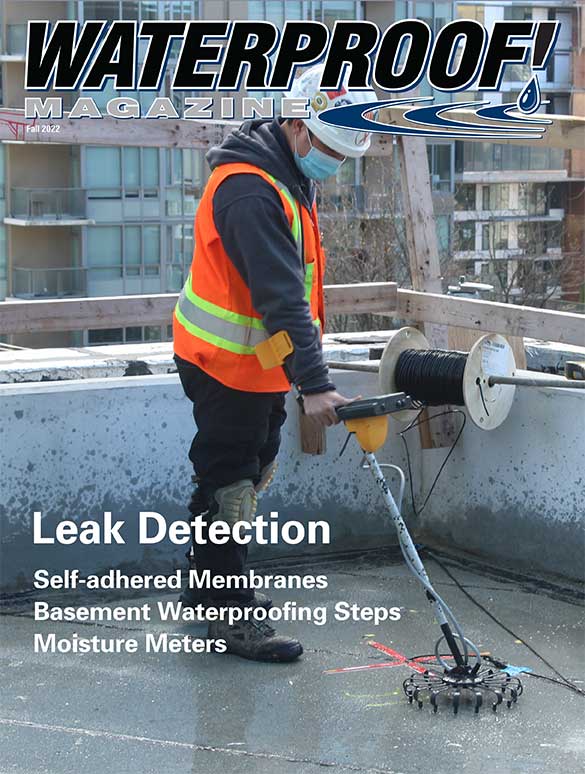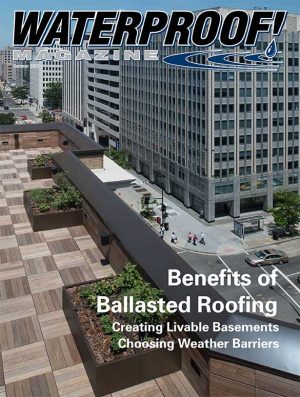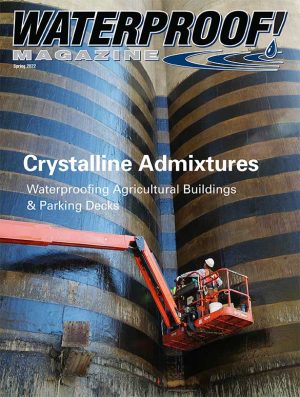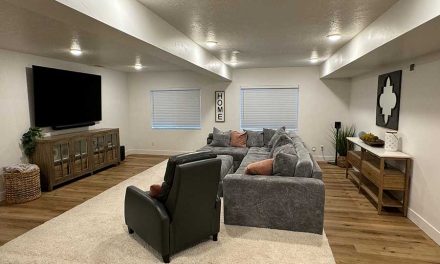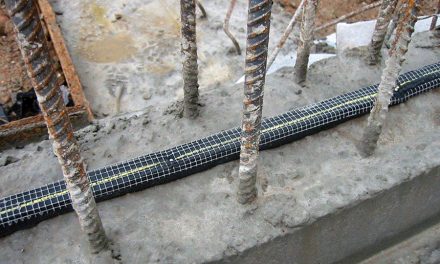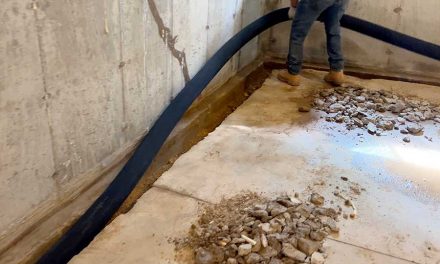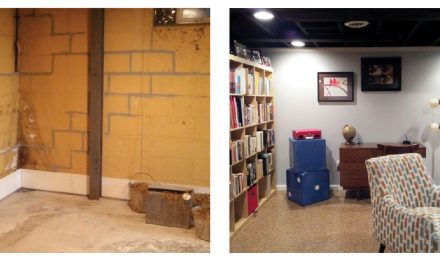By Vanessa Salvia
DMX dimple board moves water away from a foundation.
There have always been homeowners who turned an eye toward reinventing their basements into usable space, either as another bedroom, playroom, office, or just about anything. But lately, there is increasing interest in what basements can do for a home. Maximizing this generally unused area of a home can give much needed usable space to households who don’t want to relocate for various economical or family reasons.
A basement doesn’t have to be dank, musty, dark, scary spaces that you don’t want to visit. But because of their below-grade location and the impact that the basement’s air quality can have on the rest of the home, it’s crucial to be knowledgeable before undertaking a home basement remodel. Here are some of the most important things to consider before doing a remodel or basement conversion as a DIY-er or professional contractor.
Fix Moisture Problems
First things first, if there are any moisture problems in a basement they must be fixed. Painting over, laying carpet over, or adding wall finishes over a basement wall that is cracked or seeping will only cover up the problem. Water can enter the basement through cracks from groundwater in saturated soil or ineffective water drainage, or as vapor through ineffective waterproofing. Indoor humidity can condense on cold surfaces to form water droplets.
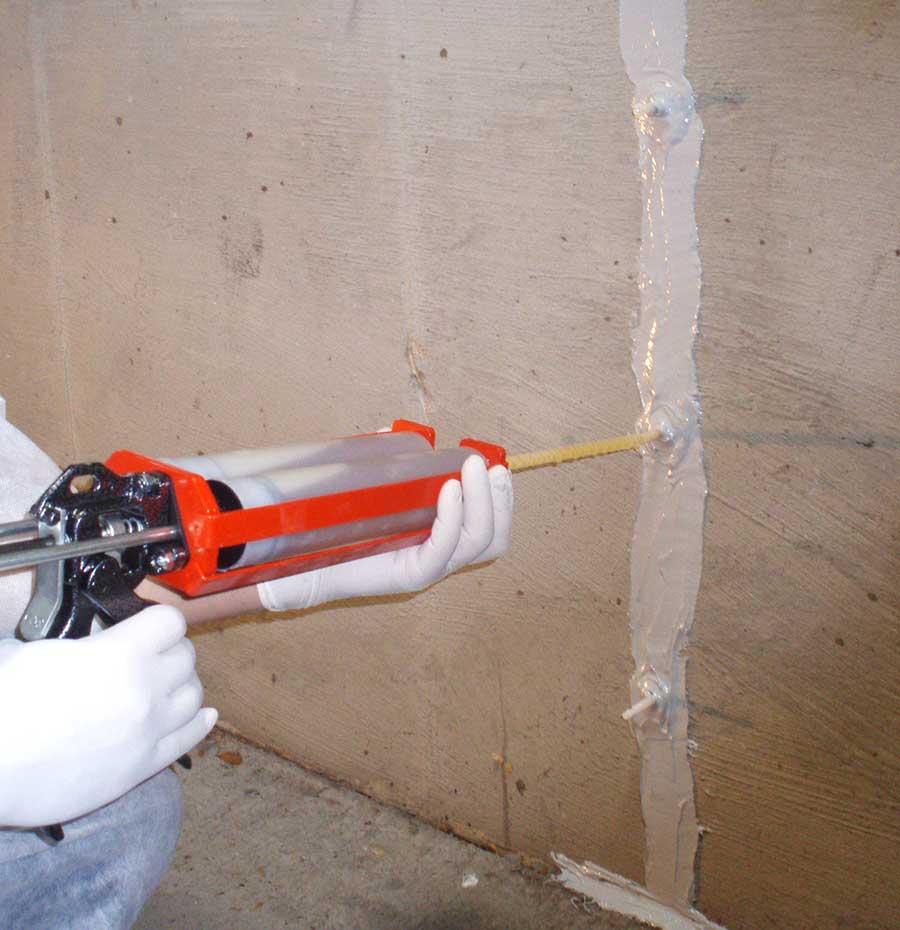
Injecting cracks with epoxy fills the cracks and prevents concrete movement that could enlarge the crack. Photo courtesy of PolyGem
Puddles of water under the house from broken or clogged pipes or broken sump pumps can eventually seep into the basement floor. If a foundation’s cove or mortar joints are failing, in-ground water can as well. Cracks in a poured or block concrete foundation wall can allow water in too. Condensation, water stains, mold, or rust are all signs of moisture problems. Structural cracks in a basement foundation can be fixed with carbon fiber. Non-structural cracks can be plugged with injections of polyurethane or epoxy. There are just as many fixes to basement moisture as there are causes so if you are a homeowner, consult a trusted professional. General basement waterproofing can be enhanced by ensuring that water is directed away from the home’s foundation. For example, gutters are functional and downspouts move water away from the house, landscaping does not cause water to puddle, the yard is properly graded, etc.
Drainage
A drainage system relieves hydrostatic pressure and moves water away from the foundation wall. There are many systems for footer or perimeter drainage but a common one is the use of a dimple board. A dimple board is a sheet of HDPE plastic with small protruding bumps. The board is mechanically fastened or otherwise adhered to the concrete wall on the outside. There is a small air gap between the board and the wall. If any water reaches this gap, the dimples encourage it to drain away to the bottom. There, the water flows into a footing drain which could be a French drain or a perforated pipe. This moves water to a sump pump or at least far enough away from the house that it can safely flow away.
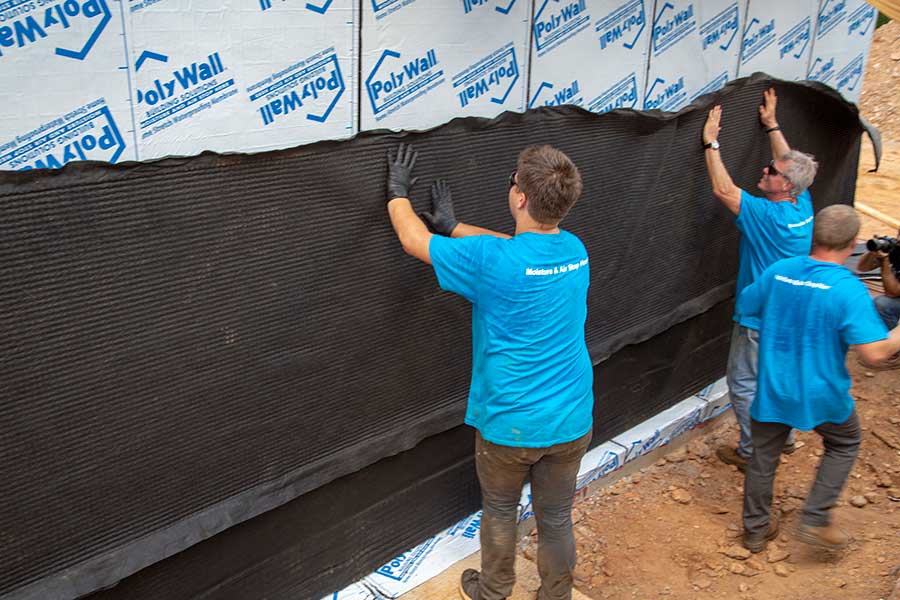
PolyGuard Arroyo Drainboard is an integrated drain and airgap membrane applied to waterproofed foundation. Photo courtesy of PolyGuard
One thing that should be added is a waterproofing layer on the concrete foundation wall. This should be applied under the dimple membrane. This can be spray-applied, such as those made by Rubber Polymer or GMX, or peel-and-stick products from Resisto or Polyguard. Choose a product specifically designed for waterproofing concrete. Peel-and-stick membranes should be a minimum of 40 mils. Apply to protect the footing joint. Most peel-and-stick products made to be applied over concrete require a primer.
Proper Backfill
If the homeowners are undertaking new construction and are finishing a basement, be sure to take care when backfilling around the basement foundation. Damage to external basement waterproofing is commonly caused by improper backfilling in which the waterproofing membranes are damaged by rocks or the backhoe itself. Choose materials that can withstand the backfilling process to decrease or eliminate the risk of damaging the waterproofing material.
Radon Mitigation
Radon is a naturally occurring gas present in soil. It can not be smelled, seen, or tasted, but it can cause cancer. Radon is the second leading cause of lung cancer. Radon can seep into a home through cracks in the foundation. Basement air affects the air quality of the rest of the home, so radon is a danger that must be considered. The home can be tested for radon and mitigation measures can be implemented if there is a problem.
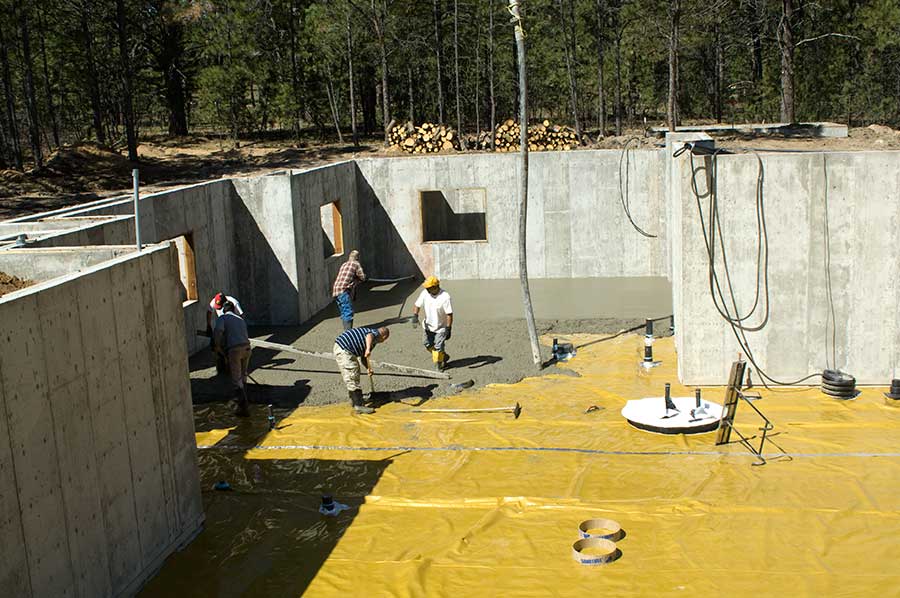
Underslab gas barrier installed to help mitigate radon intrusion into the home. Photo courtesy of Raven Industries
The most recommended proactive radon mitigation measure is to use a vent pipe system and a fan, according to the Basement Health Association. The fan pulls radon from beneath the house and vents it to the outside. In order for this system to work efficiently, foundation cracks or openings must be sealed. Fixing a radon problem can be expensive (up to $2,500 or so). It is most cost-effective to include radon mitigation measures during new construction. In addition to the venting system, an underslab vapor barrier can also help prevent radon from seeping into a home.
Egress Windows Wells
If a basement is to be used as a living space (like a bedroom), the international residential building code requires at least one egress. This is defined as an emergency means of exiting a dwelling to the outside and to allow firefighters to enter. Mar-Flex’s DuraWell egress system, for instance, provides safe egress. The egresses can be beautified with code-compliant window wells and covers. If a basement doesn’t have egress, homeowners will have a harder time selling the house. Code requires that egresses offer clear space around the window, and at least 5.7 square feet of area to allow a firefighter in full gear to enter. Codes also control window placement above the floor. The egress must include stairs, a ladder, or other means to allow the occupant to climb out of the well. Furniture placement to allow someone to “climb” out does not meet code.
Basement Air Quality
Because of an effect called “the stack effect,” air that is in a basement moves upward through the rest of the house. Roughly 50% of the air that you breathe on the first floor of your home is actually coming from your basement or your crawlspace. If the basement air is crummy, in other words, contains mold spores, water vapor, radon, particulates, and even chemicals from the things that we store down in the basement like paint, will move up through the home. Install something like an EZ Breathe to ventilate rather than recirculate stale air. Some de-humidifiers also have an air filter built in.
Dehumidifiers
A basement laundry room or bathroom can introduce water vapor into a basement. Just living in a home does as well — think showering, washing dishes, watering plants, etc. A muggy basement is a prime breeding ground for mold, and a dehumidifier can help. First, address the source of the moisture in your home. Then, make an informed decision about your dehumidifier. A dehumidifier won’t solve the problem of water continually being introduced. When choosing a dehumidifier, look for one with an accurate humidistat. Look at water removal rates rather than what the box says the square footage range is. Placement is also key — it should be centrally located not close to a wall or other obstacle and near a drain. Consider a larger capacity than you might feel you need.
Fall 2022 Back Issue
$4.95
Self-adhered Waterproofing
Basement Waterproofing Steps for New and Existing Construction
Leak Detection Systems Explained
Moisture Meters Are Essential For Roofers
AVAILABLE AS DIGITAL DOWNLOAD ONLY
Description
Description
Self-adhered Waterproofing
By Vanessa Salvia
Self-adhered waterproofing, or peel-and-stick, is common in the roofing industry because it is easy and fast. Self-adhesive technology has more than two decades of track record and offers unique features not found in other systems.
Basement Waterproofing Steps for New and Existing Construction
By Vanessa Salvia
Because of their below-grade location and the impact that the basement’s air quality can have on the rest of the home, it’s crucial to be knowledgeable before undertaking a home basement remodel. Here are some of the most important things to consider when remodeling a basement, either as a homeowner or a contractor who is helping someone with their basement conversion.
Leak Detection Systems Explained
By Joe Dakin
Leak detection has become an important part of the real estate and construction industries. For a long time, detecting leaks was done by visual inspection or using incredibly crude tools. But now, the leak detection industry is undergoing a revolution.
Moisture Meters Are Essential For Roofers
By Del Williams
After a disaster involving water intrusion, moisture meters are crucial to assess and document the damage prior to replacement or restoration.
Additional Info
Additional information
| Magazine Format | Digital Download Magazine, Print Mailed Magazine |
|---|

